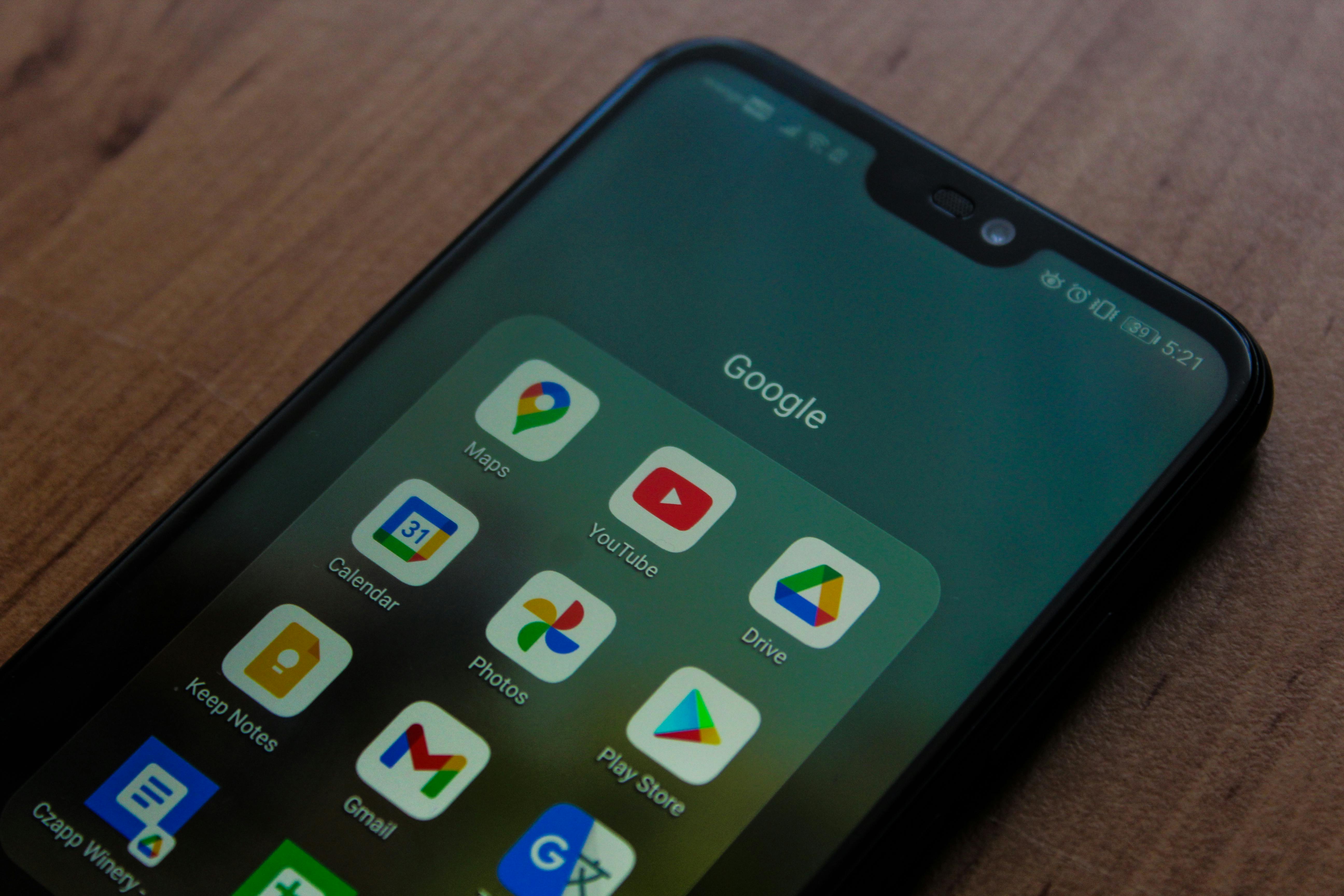
I’m Alex, a 28-year-old marketing specialist living in Denver, Colorado. I’m married with two kids, and I’m always on the lookout for ways to simplify my life and stay informed about the tech that impacts my family. I’m a big believer in user choice and transparency, and I get frustrated when companies seem to prioritize control over freedom. I love a good story, and I appreciate practical advice that I can actually use. Google’s Tightening Grip: The Uproar Over Sideloaded Android Apps in 2025 As a parent and a tech enthusiast, I’m always trying to stay ahead of the curve, not just for myself but for my family too. We’re an Android household, and I’ve always appreciated the platform’s flexibility. It’s why we chose Android in the first place – that sense of control and the freedom to customize. But lately, there’s been a growing unease among us Android users, and it all centers around something called “sideloading.” You see, Google, the company behind Android, seems to be shifting its stance on how we can install apps on our phones. It’s a move that’s causing quite a stir, and frankly, it feels like a step backward for the very principles that made Android so appealing. The Genesis of User Discontent: What’s the Big Deal with Sideloading? Let’s break down what sideloading actually means. Think of it like this: the Google Play Store is the main, official mall for apps. Sideloading is like being able to buy an app directly from a trusted independent shop or even download it from a developer’s own website. For years, Android has allowed this, and it’s been a huge part of what makes Android, well, Android. It means you can find apps that might not be on the Play Store for various reasons – maybe they’re from smaller developers, or they’re older versions, or they just don’t fit Google’s strict criteria. This freedom has been a cornerstone for many of us. It’s how I’ve found some really useful niche apps for managing our family budget or even some fun educational games for the kids that aren’t necessarily mainstream. But now, there are reports and growing evidence that Google is planning to make this process much harder, if not impossible, for apps not coming directly from their Play Store. This has understandably caused a lot of concern. Why Sideloading Matters: More Than Just an Alternative For many, sideloading isn’t just about finding obscure apps; it’s about **digital freedom** and user autonomy. It’s the ability to have complete control over the software on your own device. This is a fundamental aspect of the Android philosophy, and many users feel that any restriction on this is a direct challenge to that core principle. Historically, Android’s open-source roots have fostered a vibrant ecosystem. Developers could test and distribute their apps without the often-stringent review processes of a centralized store. This fostered innovation and ensured a wider variety of software was available. Imagine if your local bookstore suddenly closed, and you could only buy books from one massive chain – that’s the fear many have for the Android app landscape if sideloading is significantly curtailed. Google’s Evolving Security Posture: A Balancing Act? Google is always talking about security, and honestly, that’s important. We all want to protect our devices from malware and scams. Initiatives like Google Play Protect are designed to do just that, scanning apps for threats. It’s a good thing, no doubt. However, the proposed changes to sideloading seem to be an escalation of these security measures. The company is reportedly planning to require developers to verify their identity before their apps can be installed outside the Play Store, starting with a phased rollout from late 2025 and globally by 2027. Google states this is to combat “convincing fake apps” and repeat offenders. While the intention might be to enhance security, many users feel this is an overreach. Critics argue that these measures could be overly broad, impacting legitimate use cases and stifling innovation. It’s like putting a gatekeeper in front of every single door, even the ones that are perfectly safe. The “Awful Decision” Narrative: User Voices Rise The sentiment online is palpable. Many users are calling these potential changes an “awful decision” [Source Content]. This strong language reflects a feeling that Google is moving away from the open, customizable nature that has long been a hallmark of Android. There’s a genuine fear that Android is becoming more like iOS – a more controlled, “walled garden” environment [Source Content]. For someone like me, who values the ability to tweak and control my devices, this is a major concern. It’s not just about installing apps; it’s about the underlying philosophy of user freedom. When you choose a platform, you often choose it for its core values, and it feels like those values are being eroded. Implications for App Developers and Innovation: A Stifled Ecosystem? These potential restrictions on sideloading could have a significant impact on app developers, especially those who operate outside the mainstream [Source Content]. Independent developers, hobbyists, and creators of specialized software might find it much harder to get their apps into the hands of users. This could stifle innovation. Many groundbreaking apps started as small projects, distributed through alternative channels. If those channels become too difficult to navigate, or if developers are unwilling or unable to go through a rigorous verification process that requires sharing personal information, we could see a less diverse app market. The “Walled Garden” Analogy: Is Android Losing Its Openness? The term “walled garden” is frequently used in these discussions. It’s a metaphor for a closed ecosystem, like Apple’s iOS, where Apple controls what apps are available and how they are distributed [Source Content]. Many users chose Android precisely to avoid this. If Google starts enforcing stricter controls on sideloading, it risks creating its own walled garden. This could limit user choice and reduce the vibrant diversity that has characterized the Android app ecosystem. It’s a move that could alienate a significant portion of the user base that values Android’s open nature. Broader Ecosystem and Competitive Landscape: What’s at Stake? Android’s openness has been a key factor in its global market dominance. It offers a compelling alternative to more closed mobile operating systems [Source Content]. If Google significantly restricts sideloading, it could push users towards platforms that offer greater flexibility, or it could lead to fragmentation within the Android ecosystem itself. This could also affect Google’s relationship with hardware manufacturers, who have historically benefited from Android’s adaptable nature. The very flexibility that has made Android so popular could be compromised. The Future of Android’s Openness: A Critical Crossroads Android is at a critical juncture. The debate over sideloading is emblematic of a larger discussion about the direction of mobile operating systems. It’s about finding the right balance between user control and platform governance. Will Google listen to the widespread user concerns and maintain a degree of flexibility for sideloading, or will it proceed with stricter controls? The answer will significantly shape the future user experience and the competitive dynamics of the mobile app landscape for years to come. The coming months will be crucial in revealing Google’s intentions [Source Content]. User Rights and Digital Freedom: The Core of the Debate At the heart of the user opposition is the principle of **digital freedom**. Many view their smartphones as personal computers, and the ability to install software from any trusted source is seen as a fundamental aspect of ownership [Source Content]. This perspective draws parallels to broader debates about digital sovereignty and user autonomy. For many, especially younger generations, smartphones are central to their lives, providing a sense of freedom and independence. Restricting how they can use their devices feels like an infringement on that freedom. Potential Workarounds and Community Responses: Ingenuity in Action The Android community is nothing if not resourceful. In anticipation of or in response to potential restrictions, users and developers are already exploring and discussing various workarounds. These might include alternative app stores, custom ROMs, or methods to bypass new security checks [Source Content]. However, these solutions often come with their own risks, such as increased exposure to security vulnerabilities or a less stable user experience. The ingenuity of the community highlights the value placed on openness, but it also underscores the potential for a more fragmented Android experience. The Role of Google Play Protect: Guardian or Gatekeeper? Google Play Protect is designed to be a guardian, scanning apps for malicious behavior. It’s a crucial part of Android’s security. But as its capabilities expand, there’s a growing concern that it might become overly zealous, flagging legitimate applications as potentially harmful simply because they weren’t distributed through the Play Store. The transparency and accuracy of Play Protect’s detection mechanisms are under scrutiny. Users want to know if Google will allow them to override its judgments when appropriate, especially for apps they trust. Historical Context: Android’s Open-Source Roots It’s important to remember where Android came from. Born from open-source principles, it was designed to be a flexible and adaptable platform. This open heritage has been a significant factor in its widespread adoption. Any move that appears to contradict these foundational principles is met with particular resistance from a user base that values this legacy. The current situation is seen by many as a departure from these core values. It’s like a company built on freedom suddenly deciding to impose more rules. Impact on Emerging Markets and Developing Nations: A Disproportionate Effect? The implications of these changes could be particularly significant in emerging markets and developing nations. In these regions, users often rely on sideloading to install essential applications or access software that may not be readily available through official channels due to inconsistent internet access or cost [Source Content]. Restricting sideloading could disproportionately affect these users, limiting their access to digital tools and opportunities. This raises questions about equitable access to technology. The Ongoing Dialogue: A Call for Transparency and User Choice The fervent reaction from the Android community underscores a clear demand for greater transparency from Google. Users want to preserve their choice and control over their devices [Source Content]. This is a critical moment for Google to listen to its users and consider the long-term implications of its policies on user loyalty and satisfaction. The outcome of this debate will undoubtedly have a lasting impact on the perception and reality of the Android experience. As a user, I hope Google recognizes the value its community places on openness and continues to foster that spirit. Actionable Takeaways for Android Users: * **Stay Informed:** Keep an eye on official Android developer blogs and reputable tech news outlets for the latest updates on sideloading policies. * **Understand the Risks:** If you choose to sideload apps, ensure you’re downloading from trusted sources and understand the potential security risks involved. * **Voice Your Opinion:** Participate in online forums and discussions to let Google know your thoughts on these changes. Your feedback matters. * **Explore Alternatives (with caution):** If restrictions become too severe, research alternative app stores or custom ROMs, but always prioritize security. A Call to Action: What are your thoughts on Google’s evolving stance on sideloading? Do you think these changes are necessary for security, or do they stifle user freedom? Share your opinions in the comments below! Let’s keep this important conversation going.


